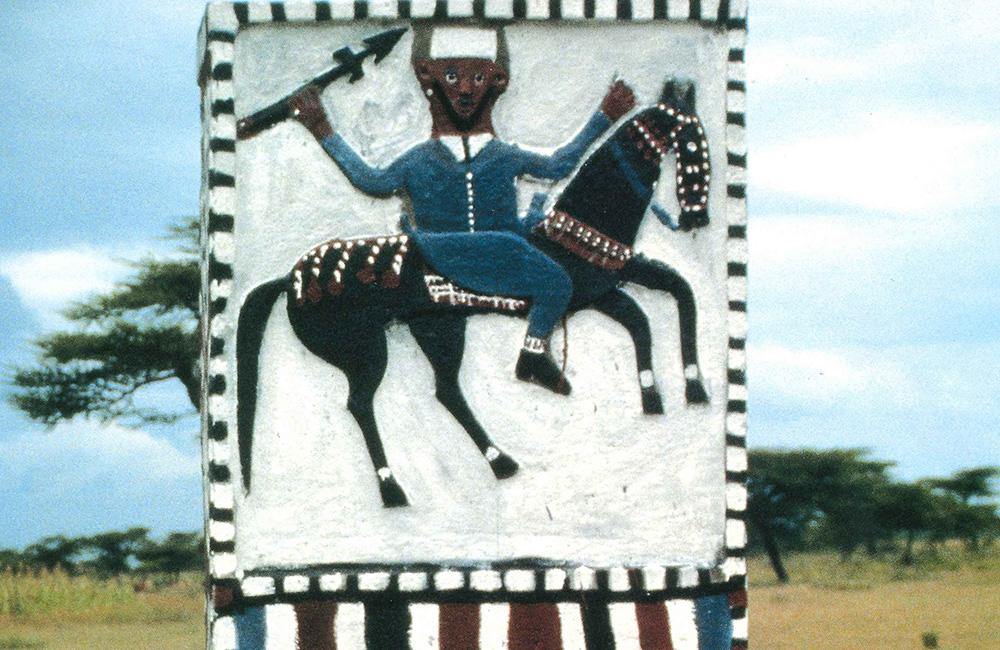First published: Spring 2001
In the upper Rift Valley lakes of Ethiopia, about 150 kilometres south of Addis Ababa, a mid-1970s custom arose of erecting brightly coloured grave markers built of cement. They are most prevalent around the lakes Zeway, Shala and Langano, but are also seen south to Shashemene.
The stones are erected beside highways and paths, and in fields, communally as graveyards or standing alone. The immediate impression is of an outdoor art gallery.

The positioning of these modern day tombstones by the roadside may have originated from a Somali tradition based on a concept whereby nomadic travellers would pause at a grave to reflect on death and spiritual matters before continuing their journey.
The dates on the tombs follow the Ethiopian calendar which is seven years behind the Gregorian; the inscriptions are written in Amharic, Ethiopia’s official language.
This is an article extract; read the full article in Raw Vision #34




